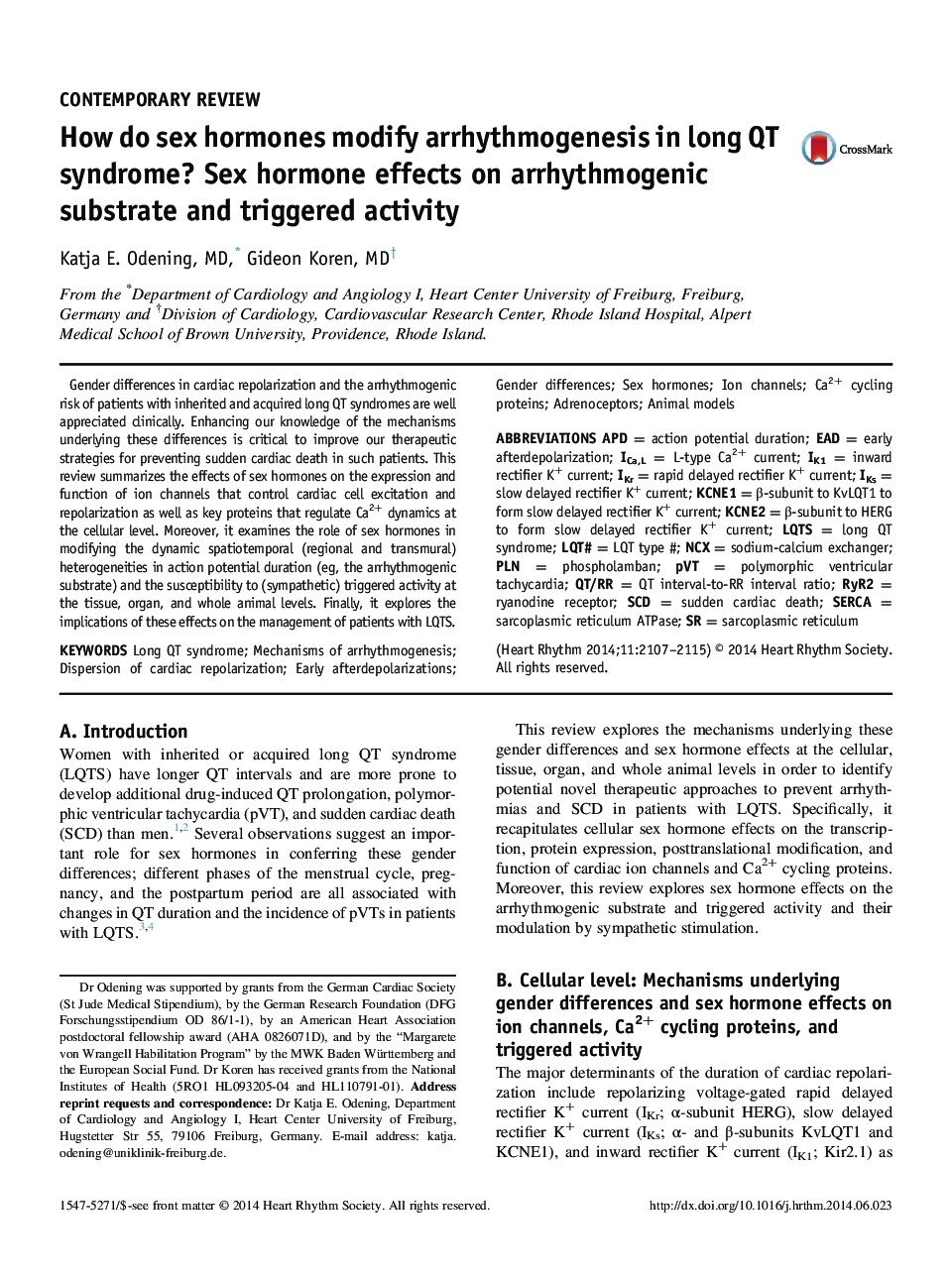| Article ID | Journal | Published Year | Pages | File Type |
|---|---|---|---|---|
| 5960644 | Heart Rhythm | 2014 | 9 Pages |
Abstract
Gender differences in cardiac repolarization and the arrhythmogenic risk of patients with inherited and acquired long QT syndromes are well appreciated clinically. Enhancing our knowledge of the mechanisms underlying these differences is critical to improve our therapeutic strategies for preventing sudden cardiac death in such patients. This review summarizes the effects of sex hormones on the expression and function of ion channels that control cardiac cell excitation and repolarization as well as key proteins that regulate Ca2+ dynamics at the cellular level. Moreover, it examines the role of sex hormones in modifying the dynamic spatiotemporal (regional and transmural) heterogeneities in action potential duration (eg, the arrhythmogenic substrate) and the susceptibility to (sympathetic) triggered activity at the tissue, organ, and whole animal levels. Finally, it explores the implications of these effects on the management of patients with LQTS.
Keywords
PLNInward rectifier K+ currentKCNE1IK1KCNE2IKrEADAPDLQTSNCXadrenoceptorsPVTRyR2IKSSCDICa,LL-type Ca2+ currentearly afterdepolarizationsearly afterdepolarizationpolymorphic ventricular tachycardiaGender differencesSarcoplasmic reticulumLong QT syndromephospholambanSERCASodium-calcium exchangerAction potential durationAnimal modelsSudden cardiac deathSex hormonesIon channelsRyanodine receptor
Related Topics
Health Sciences
Medicine and Dentistry
Cardiology and Cardiovascular Medicine
Authors
Katja E. MD, Gideon MD,
